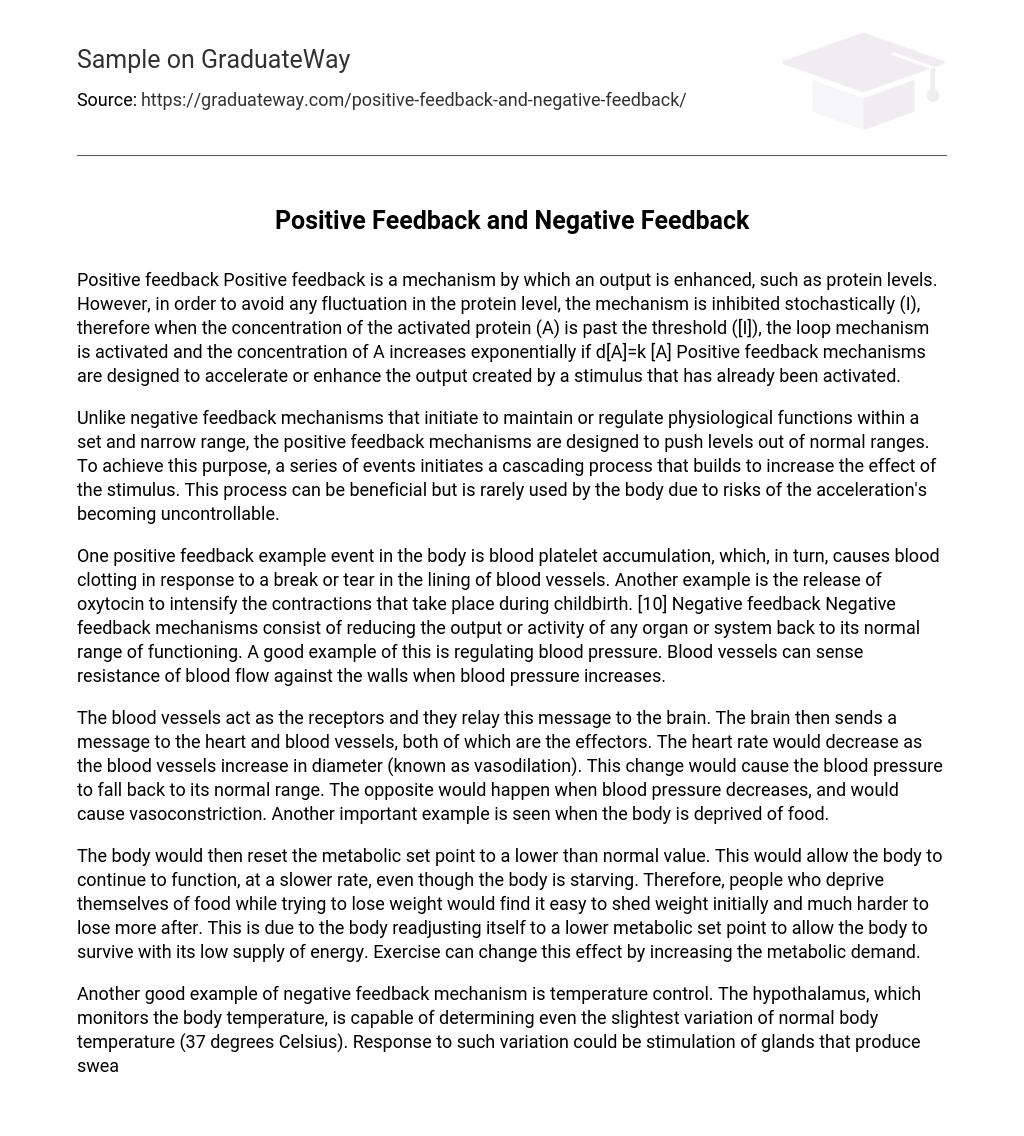Positive feedback Positive feedback is a mechanism by which an output is enhanced, such as protein levels. However, in order to avoid any fluctuation in the protein level, the mechanism is inhibited stochastically (I), therefore when the concentration of the activated protein (A) is past the threshold ([I]), the loop mechanism is activated and the concentration of A increases exponentially if d[A]=k [A] Positive feedback mechanisms are designed to accelerate or enhance the output created by a stimulus that has already been activated.
Unlike negative feedback mechanisms that initiate to maintain or regulate physiological functions within a set and narrow range, the positive feedback mechanisms are designed to push levels out of normal ranges. To achieve this purpose, a series of events initiates a cascading process that builds to increase the effect of the stimulus. This process can be beneficial but is rarely used by the body due to risks of the acceleration’s becoming uncontrollable.
One positive feedback example event in the body is blood platelet accumulation, which, in turn, causes blood clotting in response to a break or tear in the lining of blood vessels. Another example is the release of oxytocin to intensify the contractions that take place during childbirth. [10] Negative feedback Negative feedback mechanisms consist of reducing the output or activity of any organ or system back to its normal range of functioning. A good example of this is regulating blood pressure. Blood vessels can sense resistance of blood flow against the walls when blood pressure increases.
The blood vessels act as the receptors and they relay this message to the brain. The brain then sends a message to the heart and blood vessels, both of which are the effectors. The heart rate would decrease as the blood vessels increase in diameter (known as vasodilation). This change would cause the blood pressure to fall back to its normal range. The opposite would happen when blood pressure decreases, and would cause vasoconstriction. Another important example is seen when the body is deprived of food.
The body would then reset the metabolic set point to a lower than normal value. This would allow the body to continue to function, at a slower rate, even though the body is starving. Therefore, people who deprive themselves of food while trying to lose weight would find it easy to shed weight initially and much harder to lose more after. This is due to the body readjusting itself to a lower metabolic set point to allow the body to survive with its low supply of energy. Exercise can change this effect by increasing the metabolic demand.
Another good example of negative feedback mechanism is temperature control. The hypothalamus, which monitors the body temperature, is capable of determining even the slightest variation of normal body temperature (37 degrees Celsius). Response to such variation could be stimulation of glands that produce sweat to reduce the temperature or signaling various muscles to shiver to increase body temperature. Both feedbacks are equally important for the healthy functioning of one’s body. Complications can arise if any of the two feedbacks are affected or altered in any way.





